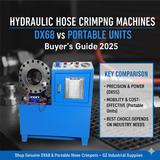HOW TO CHOOSE THE PERFECT STICK ELECTRODE FOR WELDING
HOW TO CHOOSE THE PERFECT STICK ELECTRODE FOR WELDING
Stick welding is a manual arc welding process. It requires a consumable electrode that is coated in flux to lay the weld, and an electric current is used to create an electric arc between the electrode and the metals that are being welded together. The electric current may be either an alternating current or a direct current from a welding power supply.

Before choosing an electrode to weld with you need to understand what the electrode designations mean, that is, the letters and numbers on the electrode. Two of the most commonly used welding electrodes are E6010 and E7018.
Stick welding electrodes started the designation with the letter “E” and that stood for electrode. These days many rods only have a number on them.
The first two numbers on the electrode refer to how strong the welding filler metal is. A 6010 electrode using the first two digits (60XX) stands for a minimum of 60,000 pounds of tensile strength per square inch of weld. A 7018 is 70,000 pounds of tensile strength per square inch. In comparison, typical steel, which is graded A36 steel, has 36,000 pounds of tensile strength per square inch. The weld is usually two times stronger than the steel it is welding!
If you were pondering what the last two digits speak of, it’s the flux or shielding on the rod. The higher the number the more shielding, flux, and or metal is deposited when welding. They add metal powder to the flux to increase the weld deposit rate. A (XX10) has a lot less coating then A (XX18).
There are a wide range of Stick electrodes available, each provide different mechanical properties and operates with a specific type of welding power source. When choosing a stick electrode, consider the base metal type, joint fit-up and welding positions. Before you begin welding the below guidelines should be considered.
Determine Your Base Metal
Step one - determine your base metal composition. Your goal is to match (or closely match) the electrode composition to the base metal type, this will help ensure a strong weld. If in doubt, ask yourself these questions:
What does the metal look like?
If you’re working with a broken part or component, check for a coarse and grainy internal surface, which usually means the base material is a cast metal.
Is the metal magnetic?
If the base metal is magnetic, there is a good chance that the base metal is carbon steel or alloy steel. If the base metal is not magnetic, the material could be manganese steel, 300 series authentic stainless steel or a non-ferrous alloy such as aluminum, brass, copper or titanium.
What kind of sparks does the metal give off when touched by a grinder?
As a rule of thumb, more flare in the sparks indicates higher carbon content such as in A-36 grade steel.
Does a chisel “bite” into the base metal or bounce off?
A chisel will bite into a softer metal, such as mild steel or aluminum, and bounce off harder metals, such as high carbon steel, chrome-moly or cast iron.
Base Metal Thickness, Shape and Joint Fit-Up
Thick materials require an electrode with maximum ductility and low hydrogen to prevent weld cracking. Electrodes with AS/NZS classification numbers ending in 15, 16 or 18 provide excellent low–hydrogen properties and good toughness (high impact values) to accommodate for residual stress.
For thin materials, you will need an electrode that produces soft arcs, such as a 4313; also, smaller diameter electrodes will provide shallow penetration to help prevent burn-through on thinner materials.
You’ll also want to assess the joint design and fit-up. If you’re working on a joint with a tight fit-up or one that is not beveled, use an electrode that provides a digging arc to ensure sufficient penetration, such as an E4310 or E4311. For materials with wide root openings, select an electrode, such as an E4312, that creates a concave weld face suitable for bridging gaps and making groove welds.
WELDING POSITIONS:
The American Welding Society (AWS) has defined the four basic welding positions.
(1) Flat position
In a flat position, a weld is performed along largely a horizontal axis and from above the joint. It is the easiest type of weld to perform and to gain control over the weld pool and achieve the best weld quality.
(2) Horizontal Position
In the horizontal position, the weld axis is in the horizontal plane. Horizontal welding is often used for fillet or groove welds.
(3) Vertical Position
With a vertical position, the weld axis is largely in a vertical or upright position. It is typically more complicated to perform than flat and horizontal. When welding is done on a vertical surface, the molten metal has a tendency to run downward and pile up.
(4) Overhead Position
In this the most complicated of the four, the welding is performed from the underside of the joint.
In this the metal deposited tends to drop or sag on the plate, causing the bead to have a high crown.
CLASSIFICATION OF ELECTRODES:
Electrode: a coated metal wire having approximately the same composition as the base metal.
Electrodes are mainly classified into 5 main groups:
1) Mild steel - majority of welding
2) High carbon steel
3) Special alloy steel
4) Cast iron
5) Non-ferrous - example Aluminum, Copper, & Brass
Standards are set by AWS (American Welding Society), ASTM (American Society for Testing
Materials) & BIS (Bureau of Indian standards).
MILD STEEL ELECTRODES
There are basically two kinds of mild steel electrodes:
(i) Bare:
Bare electrodes are still covered with little covering; this limits their use in the welding field.
(ii) Shielded (flux coated)
Shielded electrodes have a heavy coating on the outside of them (called flux).
Purpose of Flux:
It prevents corrosion from taking place.
It acts as a cleaner and deoxidizes.
It releases an inert gas to protect from oxygen, nitrogen, & hydrogen in the atmosphere. These elements will weaken the weld if they were to come in contact with the molten metal.
It forms slag to protect the cooling metal & allows metal to cool at a slower rate protecting the metal properties.
It provides easier starting arc, stabilizer, reduce splatter.
It permits better penetration & X-ray quality.
As the electrode burns the flux produces a gaseous shield around the weld. This prevents harmful contaminants from hurting the weld. The main 3 harmful elements present in the atmosphere
* Hydrogen
* Oxygen
* Nitrogen
WELDING ELECTRODE SIZES:
The electrode size refers to the diameter of its core wire. Each electrode has a certain current range.
The welding current increases with the electrode size (diameter).
1.6mm
2.0mm
2.5mm
3.15mm
4.0mm
5.0mm
6.0mm
6.3mm
8.0mm
10.0mm
Standard length of electrodes: Electrodes are generally manufactured in the length of 250mm to 450mm.
Kindly contact GZ Industrial Supplies Limited if you need support in choosing the right welding electrode for welding.






